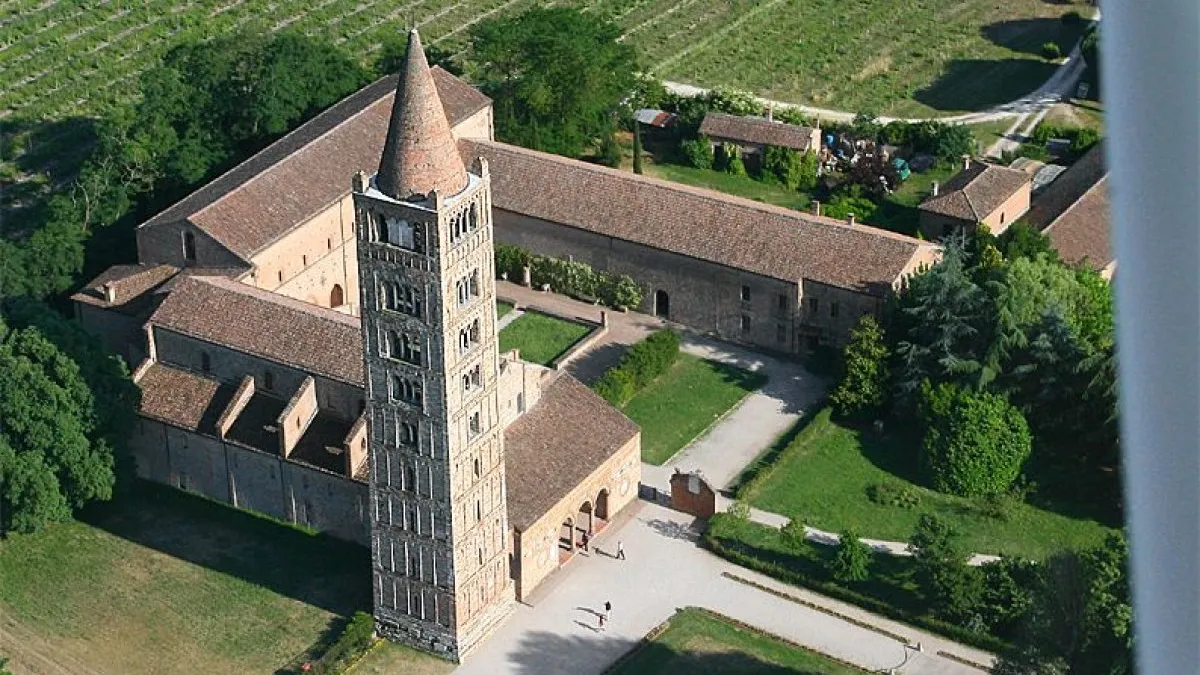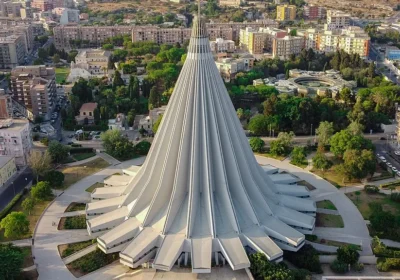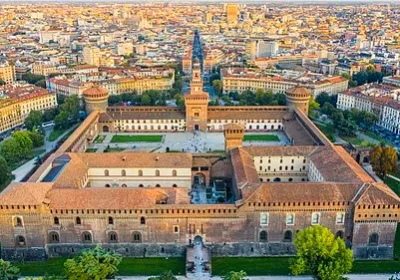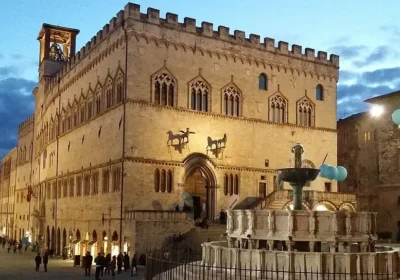Overview Tour of Pomposa Abbey.
About 50km from Ferrara along the coastal Via Romea, along which pilgrims travelled in the Middle Ages on their way to Rome, stands Pomposa, an abbey in the Po Delta. The area, one of the most important delta parks in Europe, has been a UNESCO site since 1999.
Modern Pomposa is part of a monastery that was large and powerful in the Middle Ages, a reference point for history and culture, a centre of spirituality. Historians attribute the origin of the monks’ settlement at Pomposa to the sixth to seventh centuries, when the healthy and wooded site, surrounded by the Po di Volano and Po di Goro seas, was an island. The monks studied the “Fundamental Rules of the Benedictine Order.”
The first accounts of Pomposa, however, date from 874 and concern a legal dispute between the bishop of Ravenna and the papacy. Numerous acts dating from the tenth century testify to the vitality of the monastery, which achieved full independence from both Salvatore of Pavia and Ravenna in 1001 by agreement between Pope Sylvester II and Emperor Otto III.
The first half of the eleventh century, in particular the prosperity of the Abbey of San Guido degli Strambiati (1008-1046), marks a period of maximum splendour for the Pomposian monastery, which was frequented by the most prominent figures of history of the time. During the same period Guido d’Arezzo was a monk. Recall, he discovered musical writing, which is still used in the musical world today. There is a square in Arezzo named in his honour.
The abbey complex consists of three parts: the bell tower with the church of Santa Maria, the cloister with attached rooms and the Palazzo della Ragione.
The construction of the bell tower began in 1063 by Master Deusdedit. It is a fine example of Romanesque style: about 48 metres high, the interior is divided into nine floors, which can be reached by 201 steps.
The Church of San Maria di Pomposa today has a basilica plan with three naves with a polygonal apse, typical of the Ravenna environment. Many other internal structural elements are from Ravenna. Although the frescoes in the apse and central nave are predominantly 14th-century, in some places it is possible to see some evidence of decoration from earlier centuries and to read the frescoes in chronological order.
Gvido d’Arezzo experimented with a singing practice that revolutionised Western music teaching. He had been a monk at Pomposa since 1013 and here, during the abbey of his namesake, he developed a new system of musical notation and performance. It allowed anyone to read and perform a seemingly unknown melody, accelerating learning and freeing it from oral transmission.
Many pilgrims stopped here on their way to Rome: Dante Alighieri, Frederick Barbarossa and others.

















